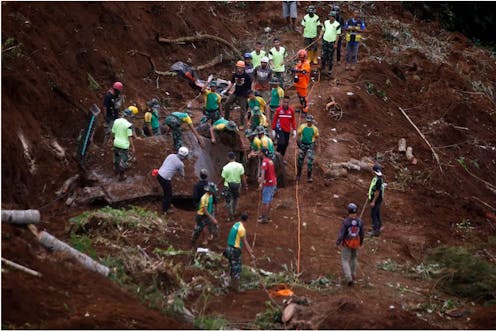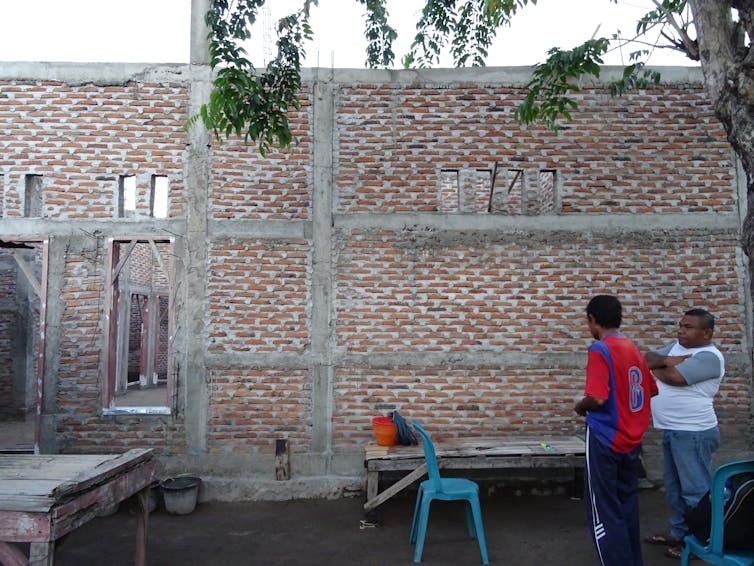
More than 340 people are dead or missing following a relatively small but shallow 5.6 magnitude earthquake in Cianjur, West Java, Indonesia.
The National Disaster Mitigation Agency reported around 7,700 people were injurred due to falling structures and debris; while 73,000 people were displaced, and about 62,000 housing units and 368 schools were either damaged or destroyed.
Over the last 15 years, I have observed how, when relatively small or medium earthquakes become disastrous, initial assements are made and blame is regularly attributed to the vulnerability of shelters and buildings.
Disaster management is often reduced to merely the distribution of emergency relief followed by patchy recovery. Then cycle begins again when another supposedly preventable disaster occurs.
What is missing is a seismic mitigation master plan that barely exists in quake-prone Indonesia.
Having seismic hazard maps but without implementation map
Indonesia’s Meteorology, Climatology and Geophysics Agency has explained three main elements that led to the Cianjur earthquake’s catastrophic damage:
- it displayed typical characteristics of shallow earthquakes
- local buildings do not meet seismic standards
- settlements are situated on soft soil and hills
The government already has a national seismic map providing information on potential quakes. The government also provides information information on practical solutions for small families during quakes.
However, it does not have a plan to enforce the seismic map. After 15 years of disaster management reform in Indonesia, the government still needs a clear operational map in implementing and enforcing mitigation policies.
The operational map for seismic mitigation should be downscaled to a unit or house level - assessing risk and making plans by individual name and address. This needs to be followed by regular monitoring.
Breaking building vulnerability chain
I propose seven steps to ensure the continuity of earthquake-safe housing implementation at the grassroots level.
First, the government must immediately produce a detailed institutional road map downscaled to the district and neighbourhood levels. Such a map must show how local governments routinely adopt and enforce codes and standards for earthquake-resistant shelters.
Second, creating a public administration system that consistently controls safety standards for housing and infrastructure. The current implementation of local governments’ minimum service standards must include ensuring safe shelters and buildings in disaster-prone areas.
Third, integrating the building permit process with the disaster mitigation agenda. The procedures should function as the first filter to ensure public safety. In general, the regulation often only administers permit retribution without any technical provisions regarding the intricacies of how to anticipate disaster.
Fourth, transforming the bureaucracy responsible for the issuance of building permits. Often, the licensing bureaucracy is prone to corruption. As a result, homeowners often adopt the “build first, permit later” approach because ‘everything can be arranged with money’. The formal procedure I’ve experienced was that it took 2-3 years for a permit to build a house.
I propose that government eliminate the administrative costs of building permits for poor families in disaster-prone regions. The fees often force low-income groups to avoid building permit process.
Fifth, empowering local builders in villages to be agents of change. My research in Sikka, Flores, East Nusa Tenggara, - one of Indonesia’s earthquake-prone areas where more than half of the housing stock collapsed in 1992 - many local builders often promote seismic mitigation measures.
Of the dozens of builders and handymen I interviewed between 2008 and 2018 in Sikka, they often advise homeowners consider seismic risk reduction. The handymen explained that, most often, poor families do not want to invest in “additional materials”. Indeed, there is always an extra cost to strengthening buildings.
The picture of a reinforced wall below is an example of a product from local builders. Strengthening brick walls using reinforced concrete could help protect them.

Sixth, transforming the behaviour of the private sector in building houses. Profit over quality often compromises safety.
Seventh, the government must develop and implement an ambitious retrofitting program at all levels. This can strengthen existing buildings and still functioning houses to withstand the next earthquakes or cyclones.
What’s next
In the Cianjur earthquake, once again, we saw that the failure to ensure the safety of school buildings and houses resulted in the death of children.
Even if there are successful technical solutions, a systematic earthquake-safe impact can only be achieved if there is a clear implementation plan.
The government needs to systematically reduce the hidden transaction costs of building houses. Local gangs’ extortion attempts, for example, need to be eradicated.
The challenge is getting bigger because there are more and more ageing buildings and houses in earthquake-prone areas. Today they may still be strong, but there is no guarantee 25 years from now when these shelters will be tested by extreme weather and earthquake events on a regular basis.
Jonatan A Lassa does not work for, consult, own shares in or receive funding from any company or organization that would benefit from this article, and has disclosed no relevant affiliations beyond their academic appointment.
This article was originally published on The Conversation. Read the original article.







